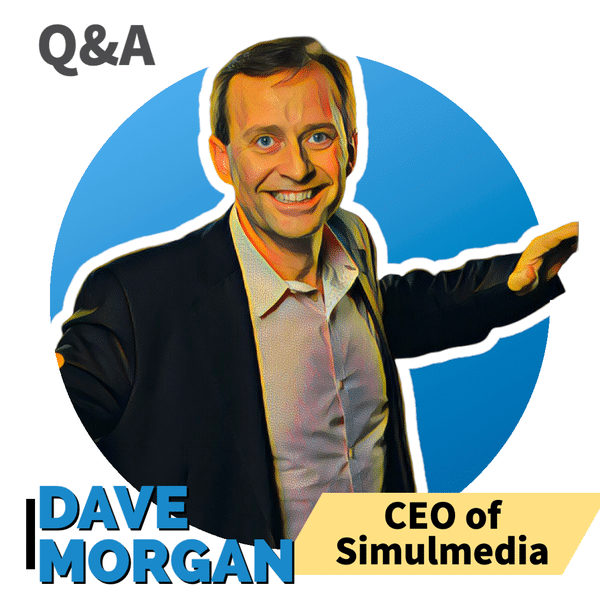Dave Morgan is the CEO and founder of Simulmedia. He previously founded and ran both TACODA, Inc., an online advertising company that pioneered behavioral online marketing and was acquired by AOL in 2007 for $275 million, and Real Media, Inc., one of the world’s first ad serving and online ad network companies and a predecessor to 24/7 Real Media (TFSM), which was later sold to WPP for $649 million. After the sale of TACODA, Dave served as Executive Vice President, Global Advertising Strategy, at AOL, a Time Warner Company (TWX).
Who are you, and what do you do?
Dave Morgan, a serial several time entrepreneur in adtech. I founded and run Simulmedia, an automated platform for brands and agencies to buy targeted video ads across all of streaming and linear TV.
When you look back to the 1990s at RealMedia, did you expect the industry to become so automated? Why or Why not?
I did not anticipate the programmatic automation that we have today in advertising. I certainly expected the precision part of it, but I didn’t come from a Wall Street background and didn’t have the context of programmatic trading.
When was your start in the convergent TV space?
My start in convergent TV was actually back in 1998 in Europe with Real Media, where we served and sold addressable TV ads across 3 or 4 million households in the UK, France and Switzerland in partnership with NTL, Cable & Wireless, France Telecom and Swisscom. When the dot com bubble burst, we ended up shutting down the initiative, but what we learned there was very much on my mind when I started Simulmedia 20 years later in 2008.
Why is there not a single industry standard yet for interoperable, cross-screen addressability
Linear TV and digital people, whether on the buy side or sell side and certainly on the measurement side are still very siloed, and still interact like oil and water at times.
Few have learned the nuances of the other and thus have difficulties finding middle grounds to work together on standards. It hasn’t helped that Nielsen, which dominates TV audience and measurement standards in the US, has been incredibly slow over the years to deploy its own unified standard.
I’m hopeful that will change with their new product Nielsen One, but the emergence of a dozen or so companies with alternative currencies on the CTV side means that the evolution is likely to be messy for years to come.
What do you see to be the key to prevent inundating consumers with too many ads?
Reducing the amount of irrelevant, redundant ads that consumers get is a real need. Fixing it starts with caring.
Right now, too many companies are happy to add another bad ad if they can make more money. As streaming TV ads become more programmatic, I fear that we’ll replicate the banner model where any advertiser can get their ad aired as long as they’re willing to pay a penny more in an auction 10 milliseconds before the ad avaia runs.
I would like to see some of the streaming services focus on ad experience as a differentiator. Netflix says that they are going to innovate here. Let’s see how they do.




